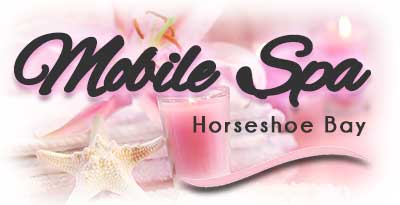Therapeutic sports massage is a type of massage technique that focuses on treating soft tissue aches, pain and injuries that are associated with recreational activities. Massage can reduce muscle stiffness and improve relaxation by reducing heart rate and blood pressure.
Sports massage has become an integral part of the new athletic regimen from sports medicine clinics, to college training rooms, to professional locker rooms to Olympic training. Growing number of trainers believe that massage can provide an extra edge to the athletes who participate in high performance sports. Massage has become a necessary ingredient for a complete workout. More and more people are realizing that a complete workout routine includes not only the exercise itself, but also caring for the wear-and-tear and minor injuries that naturally occur with strenuous movement. The physiological and psychological benefits of massage make it an ideal complement to a total conditioning program.
Anyone who routinely stretches their physical limits through movement such as running, cycling, hiking, swimming, dancing, tennis and other racquet sports, strength training and aerobics can benefit from a massage. There are others who does strenuous activities in a day that is not normally classified as exercise. Examples are mothers with small children, gardeners, and others who use their bodies strenuously in their work.
Incorporating massage in your conditioning program has many benefits. It helps you get into good shape faster, and with less stiffness and soreness. It helps you recover faster from heavy workouts, and relieves conditions which may cause injury.
For most athletes, enjoying less muscle stiffness and improving relaxation and well-being is reason enough to enjoy regular massage. But as research continues to grow on the real physical benefits of massage, more and more athletes will be taking advantage of this ‘feel-good’ training method.
Incorporating massage in your conditioning program has many benefits. It helps you get into good shape faster, and with less stiffness and soreness. It helps you recover faster from heavy workouts, and relieves conditions which may cause injury.
What Happens When You Exercise?
Regular exercise increases vigor and promotes a general sense of well-being. If done in moderation, it can help relieve the effects of stress, and has been linked to decrease in psychological depression.
Regular exercise produces positive physical results like increased muscular strength and endurance, more efficient heart and respiratory functioning, and greater flexibility.
These positive physical changes occur as the body gradually adapts to the greater demands put on it by regular exercise. The body improves its functioning to meet the challenges placed on it.
Conditioning involve three steps or phases:
Tearing Down Phase – pushing to your physical limits
Recovery Phase – key for the rebuilding
Buildup Phase – when the system adapts to the new demands
The ‘tearing down’ phase of the adaptation process often involves stiffness and soreness, especially when the amount of movement is significantly increased from what the body has been used to in the past.
Delayed muscle soreness (24-48 hours after exercise) may be caused by any of a number of different factors. Some possible causes are minor muscle or connective tissue damage, local muscle spasms that reduce blood flow, or a buildup of waste products (metabolites) from energy production.
Trigger points or stress points may also cause muscle soreness and decreased flexibility. These points are specific spots in muscle and tendons which cause pain when pressed, and which may radiate pain to a larger area. They are not bruises, but are thought by some to be small areas of spasm. Trigger points may be caused by sudden trauma (like falling or being hit), or may develop over time from the stress and strain of heavy physical exertion or from repeated use of a particular muscle.
Heavily exercised muscles may also lose their capacity to relax, causing chronically tight (hypertonic) muscles, and loss of flexibility. Lack of flexibility is often linked to muscle soreness, and predisposes you to injuries, especially muscle pulls and tears. Blood flow through tight muscles is poor (ischemia), which also causes pain.
Sports Massage Techniques
Each sport and athletic event uses muscle groups in a different way. Sports massage therapists must be familiar with each muscle, the muscle groups and how they are affected by the specific movements and stresses of each sport. They also are trained in the appropriate uses of hydrotherapy and cryotherapy.
Traditional western (e.g. Swedish) massage is currently the most common approach used for conditioning programs. It is frequently supplemented by other massage therapy approaches including deep tissue, trigger point work, and acupressure. Some massage therapists have special training in sports massage and greater experience working with athletes.

